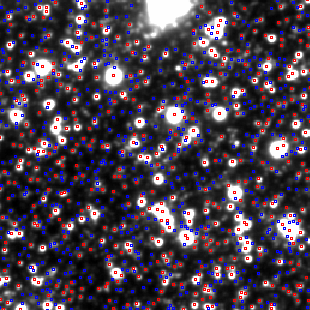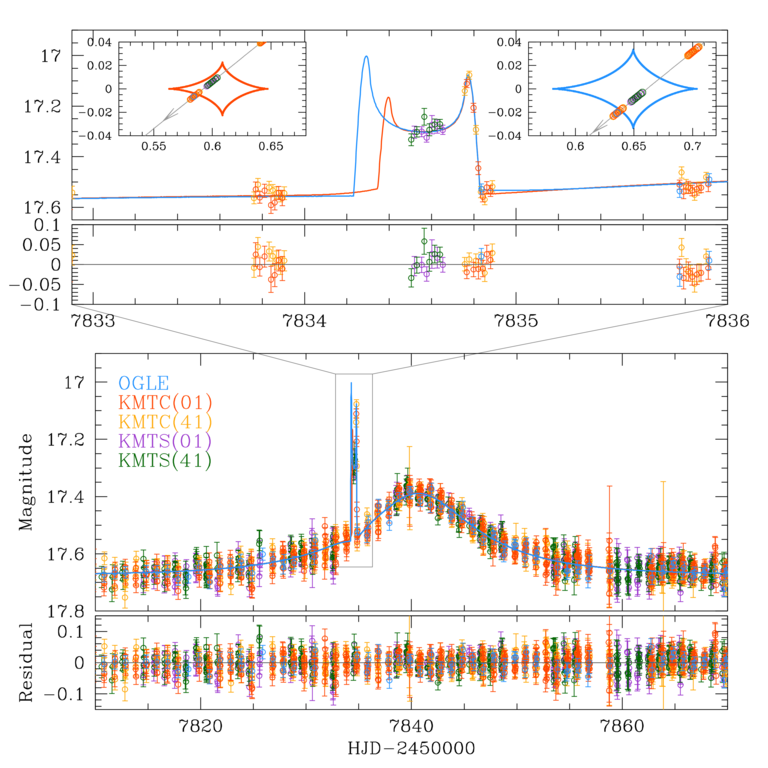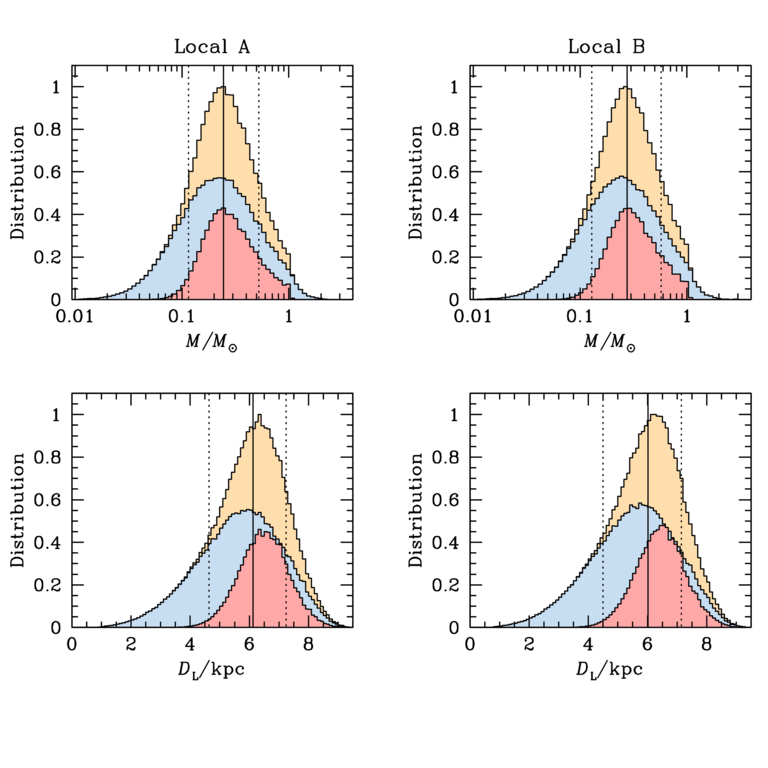Discovery of an Extrasolar Planetary System
OGLE-2017-BLG-0373Lb: A Jovian Mass-Ratio Planet Exposes A New Accidental Microlensing Degeneracy
2018, Acta Astron., 68, 43 arXiv:1802.10067
We report the discovery of microlensing planet OGLE-2017-BLG-0373Lb. We show that while the planet-host system has an unambiguous microlens topology, there are two geometries within this topology that fit the data equally well, which leads to a factor 2.5 difference in planet-host mass ratio, i.e., q = 1.5 × 10-3 versus q = 0.6 × 10-3. We show that this is an “accidental degeneracy” in the sense that it is due to a gap in the data. We dub it “the caustic-chirality degeneracy”. We trace the mathematical origins of this degeneracy, which should enable similar degenerate solutions to be easily located in the future. A Bayesian estimate, based on a Galactic model, yields a host mass M = 0.25+0.30-0.15 M☉ at a distance DL = 5.9+1.3-1.95 kpc. The lens-source relative proper motion is relatively fast, μ =9 mas yr-1, which implies that the host mass and distance can be determined by high-resolution imaging after about 10 years. The same observations could in principle resolve the discrete degeneracy in q, but this will be more challenging.
The Light Curve of the Microlensing Event OGLE-2017-BLG-0373. Two degenerate models are overplotted. Insets show source-lens relative trajectories. Data come from OGLE-IV survey (field no. BLG507.12), and KMTNet (CTIO and SAAO telescopes, fields no. BLG01 and BLG41).
Position of the planet within the Galactic bulge. North is up, East is to the left. Image size is 2' × 2'. The sky coordinates of the planetary system are (α,δ)J2000 = (17:57:19.06, -31:57:06.2) and (l,b) = (358.69, -3.71).
Estimation of the physical parameters of OGLE-2017-BLG-0373
Data for download

Light curves
- OGLE-I.txt OGLE-IV light curve (instrumental magnitudes — add 0.114 mag to calibrate to standard I-band)
- KMT-CTIO-BLG01-I.txt — KMTNet light curves, aligned to OGLE with microlensing model
- KMT-CTIO-BLG41-I.txt
- KMT-SAAO-BLG01-I.txt
- KMT-SAAO-BLG41-I.txt
Neighboring stars photometry
- map.txt — photometric map of stars in 1' × 1' area around the event (instrumental and calibrated V-band and I-band photometry)
- chart.fts — image of the region
OGLE Early Warning System discovery page: OGLE-2017-BLG-0373.
PLEASE cite the following paper when using the data or referring to these OGLE results:
Skowron et al.,
2018, Acta Astron., 68, 3
arXiv:1802.10067
Any comments about the data and the form of their presentation are welcome as they can improve the future releases of the OGLE analyses. Send your messages to jsko...@astrouw.edu.pl.
 back
back

